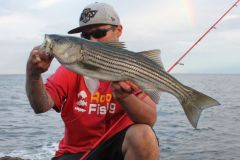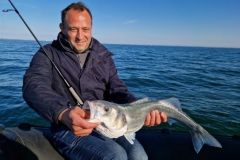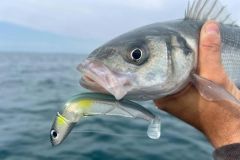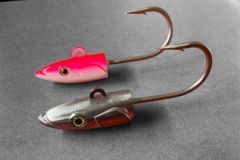A distinctive head profile
This lead head features two new features in its shape compared to what we know from leaded heads Crazy for mounting on existing Crazy Sand Eel and the Crazy Paddle Tail .
Firstly, the underside of the head is flat rather than round as on other models. This has the effect of making the lure hover and slowing down the descent.
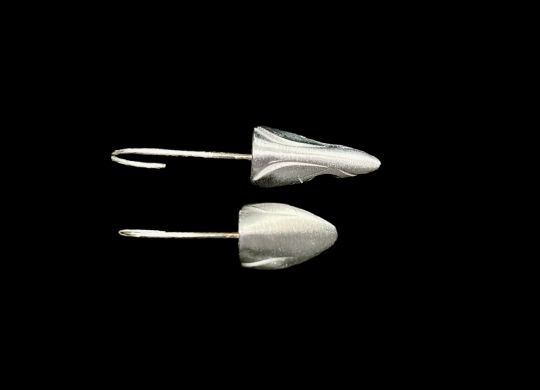
The second feature is the triangular shape on the top of the head, which allows the head to be offset when the angler makes dry shots. This is where the name dart origin.
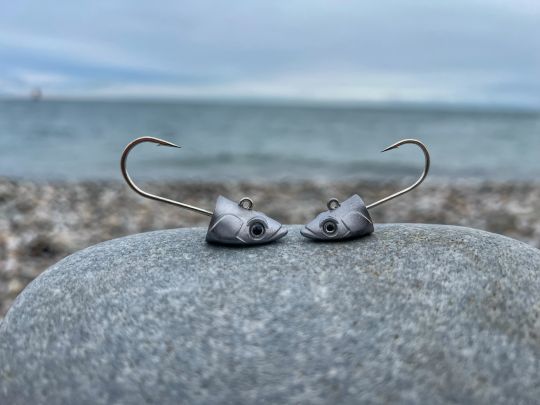
Fishing in darter consists in shifting the lure horizontally during animation to simulate the escape of wounded prey. Predators are very fond of it.
Sizes and weights
The lead head Dart is available in sizes 2 and 3, i.e. for the Crazy Sand Eel and Crazy paddle Tail 120 and 150 mm.
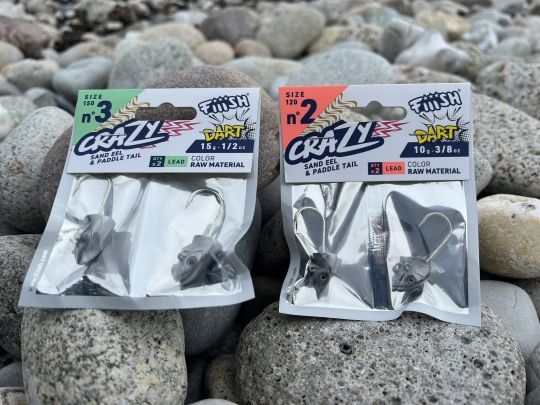
The 10 g model for size 2 (120 mm) and the 15 g model for size 3 (150 mm). These two models are the first in the series, and no doubt others will be added in the future.
For what purpose?
This lead head opens up new horizons. Usually Crazy Sand Eel were used for fast fishing, animated by continuous dry shots, letting the lure sink rapidly to the bottom when pausing.
With the new faces Dart the animation will be similar. The lure's descent during breaks will be longer and more gliding. I see this as an advantage for fish posted at the start of the season who don't necessarily have the energy to jump on prey that slips away very quickly. Here, with the lure's slower descent, they'll be able to grab it more easily.
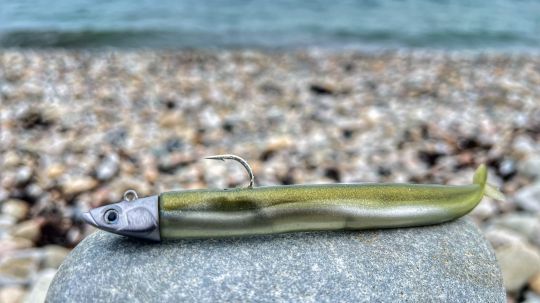
Animations "misspelling"These will excite even the most recalcitrant fish. Remember to add a rattle in lures, whether on Crazy Sand Eel or the Crazy Paddle Tail . It's a real plus.
Finally, with leaded heads Crazy in the past, it was difficult to practice scratch fishing. Faced with fish that are stuck to the bottom, or are themselves feeding on the bottom, scratch fishing is the technique that will bring you the best results.
It consists in making contact with the bottom between each animation. As the lure falls back to the bottom, it will lift off a little of the substrate if you're on a sandy bottom, for example, and make a noise that will attract the fish.
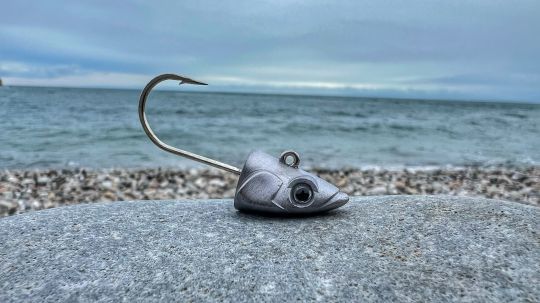
Placed on the bottom, the lure has a natural appearance thanks to the head Dart . The head will rest on the bottom and the lure will be slightly raised, suggesting a small prey searching the bottom. Predators love this type of animation.

 /
/ 




